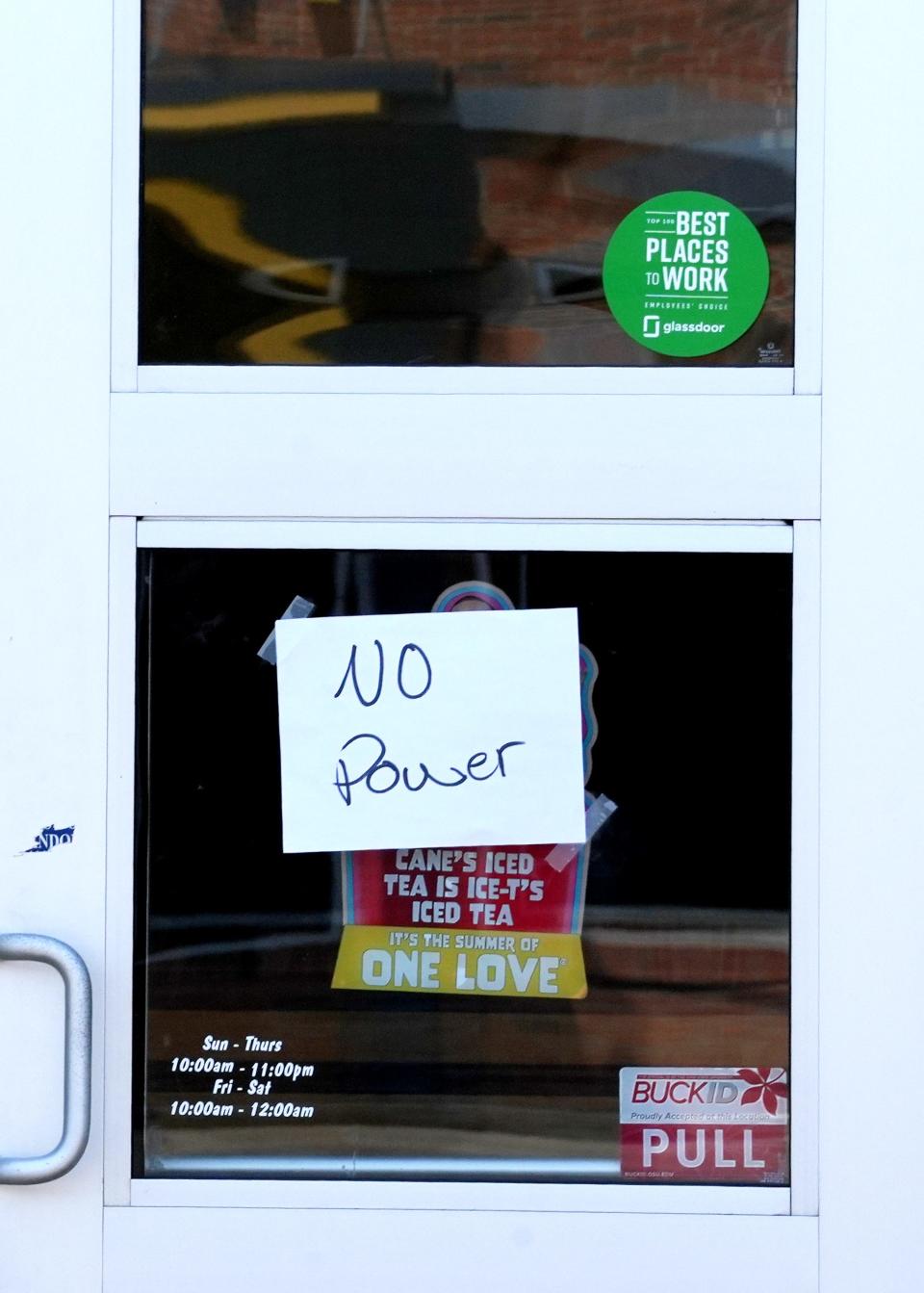AEP documents 18 minutes before the lights went out for 150,000 customers

Over the course of 18 minutes on that hot afternoon of June 14 — hours after Ohio had been pummeled by powerful storms carrying winds of up to 90 mph and producing three tornadoes — one American Electric Power Ohio transmission line after another that brings electricity into Columbus failed.
Seven transmission lines, with busted equipment or damaged by falling trees, went down from 1:39 p.m. to 1:57 p.m., AEP told state regulators on Wednesday.
At 2:02 p.m., AEP received the first order to shut off power to customers throughout Greater Columbus and was given just five minutes to act. Over the next 31 minutes, AEP would receive additional orders to turn off more electricity, orders made to prevent what was feared could become a cascading series of outages.
In reports and testimony last week to the Public Utilities Commission of Ohio, the Columbus-based utility documented the moments that led to the extreme decision to cut power off, without notice, to 150,000 Columbus-area customers.
The first outages that started between 1 and 2 p.m. on June 14 affected 110,000 customers in the north and south Columbus and the northeast part of the city.
Between 2 and 7 p.m., another 40,000 customers in the western part of the city along with Galloway, Grove City and Hilliard lost power.

By the following morning, some of those damaged transmission lines had come back online, but then four more failed over a 15-minute period, and again AEP was ordered to turn off power, this time to 125,000 customers scattered throughout the city. Many of them had just gotten power restored from the outage that began the day before.
On top of that, 21,257 Columbus-area customers lost power because of damage caused by the storm. They were among 150,762 AEP customers affected statewide, some of whom didn't get power restored for a week.

AEP along with PJM Interconnect, the agency that oversees the grid, laid out the timelines for PUCO. It was PJM that ordered AEP to shut off power to reduce demand for electricity and the stress on other power lines.
The last time PJM ordered a utility to turn off power in Ohio was in 2013, said Michael Bryson, PJM's senior vice president of operations.
Bryson and AEP officials said there really was no choice.
A similar situation happened in 2003 when a failed power line in northeast Ohio caused an outage that spread to the East Coast, affecting 50 million people.
"When one of these lines goes down, other lines in the system have to carry that electricity," Bryson told PUCO commissioners. "If enough lines go down, surrounding lines begin to reach or exceed their operating limit."
If AEP had done nothing, the surrounding lines likely would have failed anyway and soon, leading to possibly longer outages.
"Without this action, additional or more widespread damage would have likely occurred," he said.
When asked if there was a way to have spread the pain of the outages among more neighborhoods, Marc Reitter, AEP Ohio's president and chief operating officer, told the commissioners no.
"The outages were not directed to particular communities but were driven by the grid condition created by the storm and the high demand for electricity associated with extremely hot weather," he said. "Simply put, the emergency load reduction was driven by physics."
Toby Thomas, AEP Ohio's senior vice president of energy delivery, said AEP is reviewing the outages to see what can be done to make the system more resilient. That includes managing vegetation and exploring burying more power lines, he said.
"I've done a lot of soul searching to see if there is something we could have done differently," Thomas told the commissioners. "With that I don’t see it. We are committed to our customers.’’
Complaints climb as outages spread
As the temperatures rose during the outages so did the complaints that the PUCO received about AEP.
Logs of phone calls the agency received from AEP customers and provided to The Dispatch charged that the company targeted low-income neighborhoods with the outages, that food was spoiling and that the outages posed a threat to consumers with medical problems. Callers accused the company of not doing enough to protect the resiliency of the grid and that AEP should have given customers notice before shutting off power..
"On 6/14 during the hottest day of the year so far, AEP of Ohio forcefully cut off power to our home and many others," according to the summary of one complaint that the PUCO received.
"Forcing us power (customers) into darkness. A/C was shut down, while the house heated up to 85 (degrees) inside. Fridge was closed but food could be spoiled. Working from home with no power has been a loss of time and income. Power to any area of town or a community should not be FORCED offline. The grid should be safe, and if it's not, AEP should be using some of the millions in profit to replace the outdated or harmed lines/grid."

Other complaints also laid the blame squarely on AEP.
"Turning off power without any warning to Columbus residents on the hottest day of the year is a public health and safety issue endangering the lives of the ill, the elderly, pets and children," according to a summary of the complaint. "How do they not have emergency heat management protocols in place. The summer is hot and getting hotter every year. This is a total failure of infrastructure planning and it is potentially life threatening."
The PUCO received 16 complaints about AEP on June 14, 102 on the 15th and 37 on the 16th.
At the same time, consumer, environmental, business and other groups along with politicians have been pushing for the PUCO to order an investigation of AEP and the outages, including whether the transmission problems led to the forced outages and how the outages affected various neighborhoods.
"Franklin County’s poorest residents live in some of the neighborhoods that AEP Ohio’s outages hit hardest," according to a motion made by the Ohio Consumers' Counsel and other groups asking for the investigation.
A Dispatch analysis of the outages found that while some poor neighborhoods were badly hit by the outages, so were affluent areas.
Commission Chair Jenifer French said the hearing with AEP and PJM is part of a process to gather more information about what happened. PUCO is preparing a report on the outages and wants to continue to hear from customers as part of that process.
AEP seeks to improve communication with customers
AEP's Reitter acknowledged that the company needs to improve its communication with customers during outages, especially one of this size.
Only 14% of its 1.2 million customers have signed up to receive alerts from the company on their cell phones, he said.
"Did we find areas where we need to improve? Yes. Did we reach everyone? No," he said. "We did our best in a short amount of time."
Reitter is envisioning a system that could work something along the lines of Amber or weather alerts.
"Mobile alerts, that's the way to reach the most people as fast as possible,’’ he said. "We have to think about how that can change. That’s an area we can focus on."
mawilliams@dispatch.com
@BizMarkWilliams
This article originally appeared on The Columbus Dispatch: 18 minutes, then the lights went out for 150,000 AEP customers

